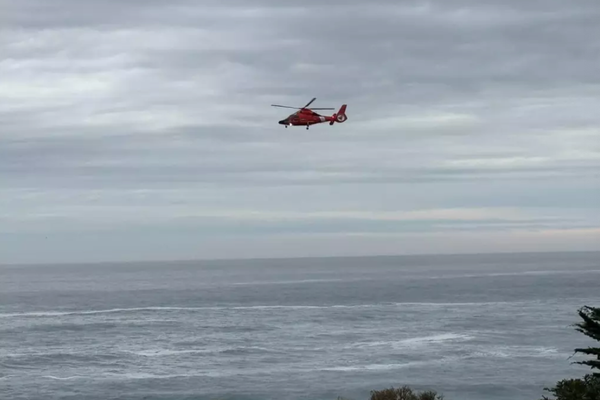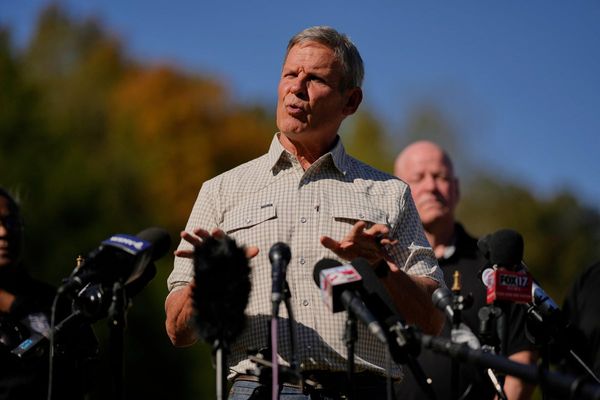SACRAMENTO, Calif. — Two words that government officials always try to avoid saying are "drought's over" — even when there's flooding.
This winter, Gov. Gavin Newsom has continued to declare that California's in a drought even while proclaiming regional flood emergencies.
This just seems contradictory and confusing. How can there be a simultaneous drought and flood?
Well, in weather-erratic, geographically diverse California, perhaps.
And I get it: Emergency proclamations allow victims to cut through bureaucratic red tape so they can drill a new well, obtain a flood repair permit or receive government aid.
But why persist in the fiction that we're still in a statewide drought?
It really doesn't matter, I suppose, because ordinary people don't pay much attention to such nonsensical governmentese. It's one small example of why government lacks credibility for so many people.
To accept the contention there's still a statewide drought, you need to change the conventional meaning of the word. Of course, we've done that with lots of words in my lifetime. No need to go into that here.
The definition of drought that I learned in school is pretty much the same as the ones I found in a Google search: "A prolonged period of abnormally low rainfall, leading to a shortage of water." And: "A deficiency of precipitation over an extended period of time … resulting in a water shortage." Or simply: "Drier than normal times."
This definitely is not "drier than normal times."
Storms delivered by atmospheric rivers drenched most of California last month.
The Sierra Nevada snowpack is glorious. It grew to 205% of normal as of Feb. 1, the deepest it has been in four decades. Sierra Nevada snow supplies about 30% of California's water.
It's "the wettest year on record dating back about 40 years," declared Sean de Guzman, snow survey manager for the state Department of Water Resources.
"One of the wettest three-week periods on record in California," the Department of Water Resources proclaimed in a statement.
But it's still a drought?
When I checked the Department of Water Resources website last week, Los Angeles' precipitation for this point in the rainy season was 156% of normal. In San Diego, it was 138%. Riverside was roughly average: 104%.
Other readings, moving north: Bakersfield 128%, Fresno 156%, Paso Robles 160%, Monterey 159%, San Francisco 158%, Stockton 191%, Lake Tahoe 185% and — in Newsom's backyard — Sacramento 132%.
It has been much wetter — not drier — than normal.
"California is a really big state. Most of it has done well, but there are still some parts that are below average in precipitation," DWR Interstate Resources Manager Jeanine Jones told me when I asked why state government is still saying there's a drought.
Sure enough: Death Valley has had only 23% of normal precipitation, which is a mere 2 inches annually anyway. Palm Springs is at 60% of normal. Up north, Mount Shasta is at 30% and Eureka 83%.
"There's no single thing that determines when a drought is over," says Lisa Lien-Mager, spokesperson for the state Natural Resources Agency. She acknowledged that "it's entirely possible the drought is over in some parts of the state."
I've seen this in past droughts. Even if it were to rain buckets for 40 days and 40 nights, government would hesitate to declare an end to a drought.
One reason is that officials fear we'd resume watering our thirsty lawns and taking long showers. But we've gotten a lot better at conserving water, even in wet years. After the last drought, many of us continued our water-saving habits.
Government seems to have narrowed its definition of drought to just "a shortage of water" — no matter how much Mother Nature gives us.
We're using more water than we can capture and still protect what's left of California's natural environment.
That includes the West Coast's largest estuary — the Sacramento-San Joaquin River Delta — and the coastal salmon industry.
The water shortage is particularly acute in the agriculture-rich San Joaquin Valley.
"There are groundwater basins that have been depleted by over pumping," Lien-Mager notes. "Wells have gone dry — and are going dry."
Jones says that in January alone during the deluge, 51 dry wells were reported to the state.
But don't blame the drought. Blame agriculture for excessive pumping and the government for allowing it to happen.
Nine years ago, California finally became the last Western state to begin regulating groundwater — but only drip by drip. Groundwater usage won't become sustainable for another 20 years. Newsom and the Legislature should try to speed that up but won't because it would cost them politically.
Agriculture uses 80% of California's developed water.
Farmers will be helped this summer by increased surface water. Big reservoirs are being replenished by runoff from the January downpours.
California's largest reservoir, Shasta, has risen to 58% of capacity, which is still only 86% of average for this time of year. But the second biggest, Oroville, is at 68%, or 114% of normal.
Other major reservoirs: Folsom is half full, which is above normal. San Luis is two-thirds full, or nearly normal.
All the biggies are expected to fill by summer or come close.
But state officials won't allow themselves to become optimistic.
"We know from experience how quickly snowpack can disappear if dry conditions return," says Department of Water Resources Director Karla Nemeth.
OK, but Mother Nature wouldn't be so cruel as to suddenly stop raining this winter. Would she?
Whatever. For now, let's be straight with people and acknowledge that the drought's over.
____







